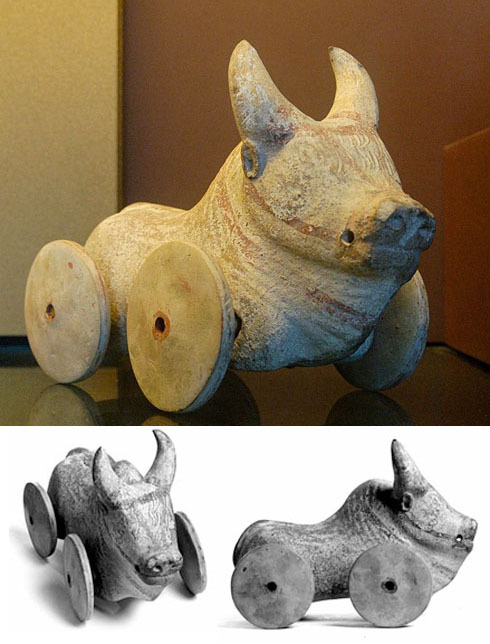Buffalo on Wheels Toy

Annotation
This object made from terracotta was most likely a child's pull toy. Approximately 11 centimeters high and 16.5 centimeters long (4.3 x 6.5 inches), it features functional wheels and a hole at the mouth for a string. The buffalo shows traces of stripes in red paint, and has markings that represent its curly forelock. The object is dated to the Archaic Age (ca. 750-500 BCE) in Magna Graecia ("Greater Greece"), the region in the southern part of the Italian Peninsula colonized by the Greeks during the 8th century. Toys were presented to Greek children on the occasion of festivals and anniversaries, and had a ritual function. Dedicated to Dionysis, they were believed to calm a child and remove evil spirits, especially toys that made noise such as rattles and whistles.
Credits
Buffalo on wheels, Musée du Louvre, Paris from the Campana Collection, 1961 Accession number Cp 4699, Department of Greek, Etruscan and Roman Antiquities, retrieved at http://cartelen.louvre.fr/cartelen/visite?srv=car_not_frame&idNotice=7347 (accessed March 9, 2009). Color photograph by Marie-Lan Nguyen at http://commons.wikimedia.org/wiki/File:Toy_buffalo_Louvre_Cp4699.jpg (accessed March 9, 2009).